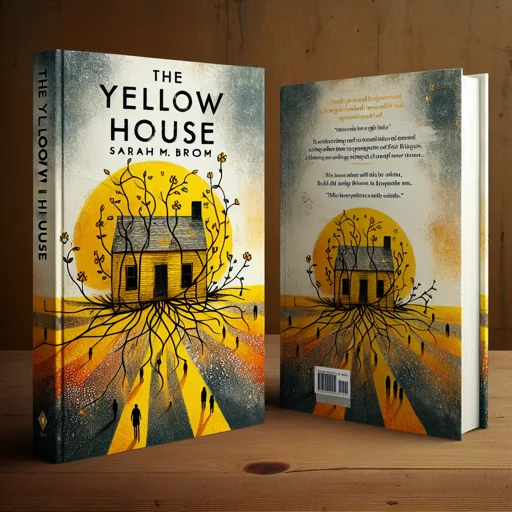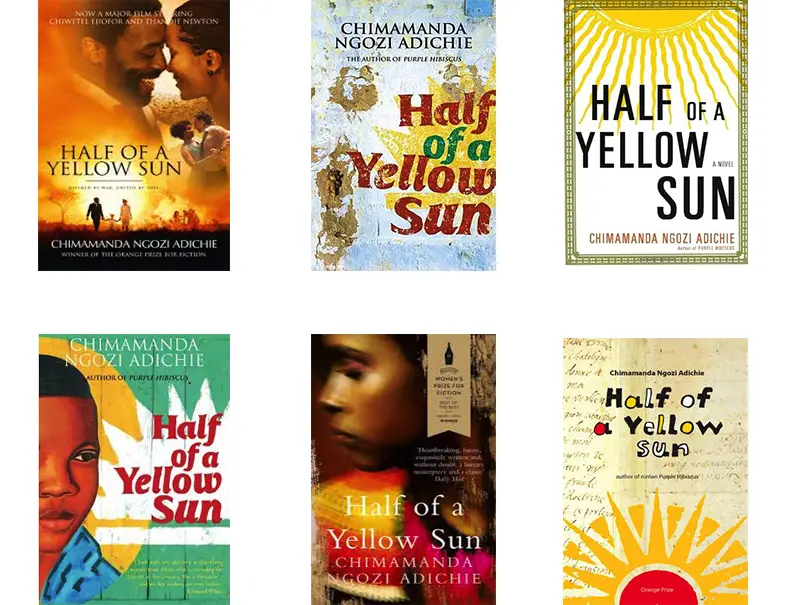READ ALSO: Accurate Half of a Yellow Sun Chapter Summary: Chapter 6 & More
The Yellow House Sparknotes

There isn’t an official SparkNotes guide for The Yellow House by Sarah M. Broom.
Here’s an accurate, up‑to‑date overview of the book though:
Table of Contents
The Yellow House Sparknotes: Overview & Author Background
- The Yellow House is a critically acclaimed memoir published on August 13, 2019, by Grove Press.
- It’s Sarah M. Broom’s debut book, mapping her multigenerational family story rooted in New Orleans East, with her childhood home—or its memory—at the center.
- Broom (born Dec 31, 1979) earned a National Book Award for Nonfiction in 2019, earning widespread praise from critics.
Memoir Structure & The Yellow House Sarah Broom Summary
The memoir is arranged in four “Movements,” reflecting both personal and historical arcs:
- Movement I: Family Roots & The Yellow House
- Begins with Broom’s grandmother “Lolo” and mother Ivory Mae, tracing their difficult personal histories.
- Ivory purchases the house in 1964—a modest shotgun home on unsettled New Orleans East land, which later earns the nickname “Yellow House.”
- Movement II: Childhood & Self‑Discovery
- Born on Dec 31, 1979, Sarah grows up as the youngest of twelve. Her father dies young; she faces poverty, shame, and a segregated upbringing.
- She later excels academically, attending University of North Texas and UC Berkeley. Her new glasses symbolize both literal and metaphorical clarity.
- Movement III: Hurricane Katrina & Displacement
- Katrina devastates New Orleans in 2005, with the Yellow House suffering irreparable damage. While Sarah is in New York, her family survives in East.
- Her grandmother Lolo dies a month later; the house is ultimately demolished by New Orleans authorities.
- Movement IV: Return, Reflection & Writing
- Broom lives abroad (Burundi) before returning to New Orleans. She writes for the mayor, but remains critical of slow, unequal recovery efforts.
- Eventually she returns to live in New Orleans full-time, researching history and reflecting that “the story of our house was the only thing left.”
The Yellow House Summary: Central Themes
- Home & Belonging: The Yellow House symbolizes identity, legacy, and familial ties.
- Race, Class & Structural Inequality: Broom’s narrative illuminates the systemic neglect of Black communities in New Orleans East.
- Memory & Storytelling: She challenges traditional archival history, valuing oral histories and lived experiences. Quotes like “Fixed details were important…even if you couldn’t prove them.” highlight this.
- Trauma & Resilience: Katrina and generational adversity shape the memoir, but Broom emphasizes survival and reclamation.
Writing Style & Structure
- The narrative is non-linear and essayistic—some readers find this stylistically dense, others find it enriching. Broom shifts between personal anecdote and broader social commentary.
- It opens with a powerful “map” perspective—an aerial view of the land—adding layers of emotional and geographic distance.
Accolades & Recognition
- National Book Award for Nonfiction (2019) and the John Leonard Prize for debut works.
- Recognized by The New York Times, Washington Post, Publishers Weekly, and Kirkus, praised as “a major memoir…among the essential memoirs of this decade.”
TL;DR for “SparkNotes” Lovers
- What it does: Traces Sarah’s family roots, the rise and fall of the Yellow House, and her own search for purpose.
- Looking for character profiles or theme analyses? Online resources like eNotes and SuperSummary offer chapter-by-chapter breakdowns.
- Notable stylistic features: Non-linear, familial oral history, rich metaphor—especially about home, loss, and inequality.
READ ALSO: Concise, Accurate Half of a Yellow Sun Chapter 2 Summary & More

READ ALSO: Accurate Half of A Yellow Sun Summary: Chapters 17 – 20
Half of a Yellow Sun Sparknotes: Chapter 7 Summary
Chapter 7 of Half of a Yellow Sun begins a new section of the book entitled The Late Sixties.
The Chapter begins with Ugwu visiting his family in the village and talking to his sister Anulika.
Anulika, who Ugwu suspects is pregnant, is set to marry Onyeka, a mechanic who works in town.
Ugwu has become used to his life in Nsukka and sees his old home through new eyes, evidenced in, for instance, that he now finds the food there unpalatable.
On the day that he returns to Odenigbo and Olanna’s home in Nsukka, a military coup takes place in Nigeria.
The academics who visit Odenigbo and Olanna’s home that evening seem in support of the coup because they think it will put a stop to government corruption as well as to north Nigerian supremacy.
This support is unanimous, despite those present coming from different parts of Nigeria.
READ ALSO: Later Experiences with Corned Beef & More